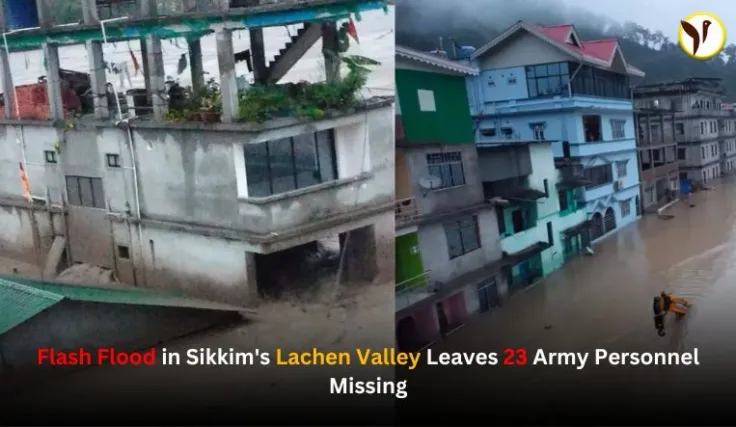A flash flood in the Sikkim Lachen valley, produced by a sudden cloudburst over Lhonak Lake in North Sikkim, has left 23 Army troops missing. The tragedy happened on Tuesday night and sent shockwaves throughout the area.
The flash flood was intensified by the discharge of water from the Chungthang dam, causing the Teesta River to surge to dangerously high levels, reaching up to 15-20 feet downstream. Army vehicles parked near Singtam were carried away by rushing floodwaters, worsening the situation.
This disaster has also severely damaged several Army installations along the Lachen Valley. Authorities are working around the clock to determine the exact scope of the devastation.
The flood's influence spread beyond the military sites. Under the overpowering force of the water, the Singtham footbridge over the Teesta River collapsed, and sections of National Highway 10, which connects West Bengal to Sikkim, were washed away. Many highways became inaccessible, further isolating the afflicted areas.
The Sikkim government has declared a state of emergency and recommended locals to avoid the Teesta River. As a preventive move, the Jalpaiguri administration in neighboring West Bengal has begun the evacuation of residents from the river's lower catchment area.
This calamity follows a disastrous flash flood in June of this year that previously destroyed North Sikkim. The Pegong area was particularly badly impacted, leading to the closure of NH10 and extensive damage to the highway's infrastructure. Due to the overflow of surrounding rivers, Lachen and Lachung were shut off from the rest of the state, stranding roughly 2,400 visitors who necessitated Army rescue efforts.
As search and rescue efforts to find the missing Army troops accelerate, the region prepares for a long road to recovery, with substantial damage to infrastructure and the economy.
Also read, CA Industrial training at JP Morgan: Eligibility and How to apply?







